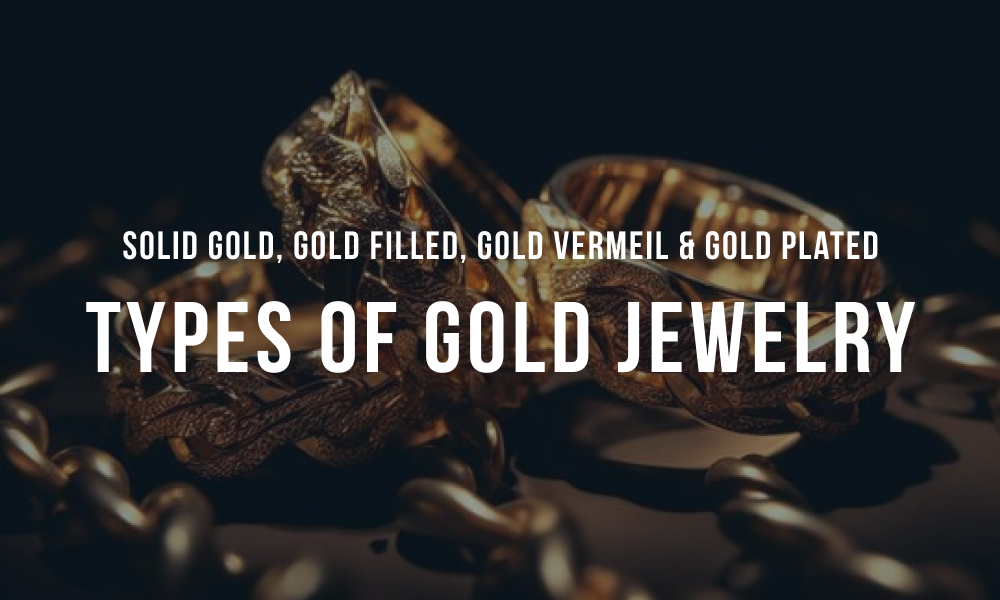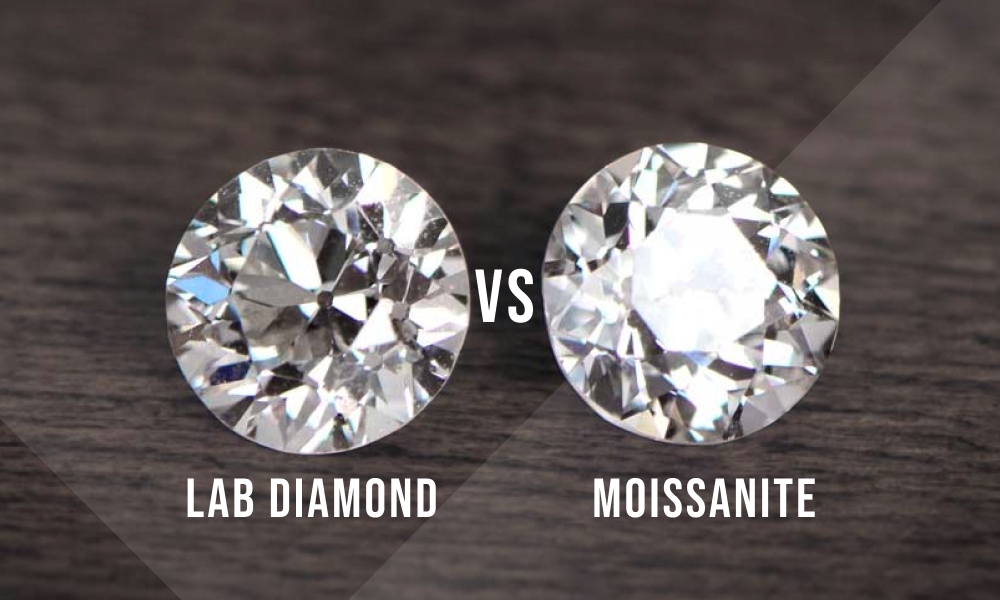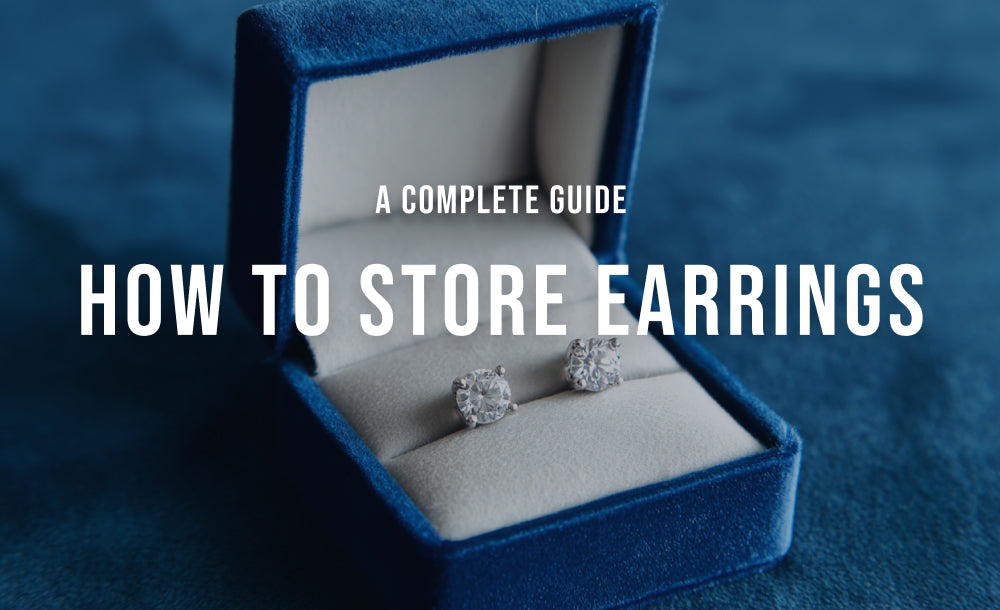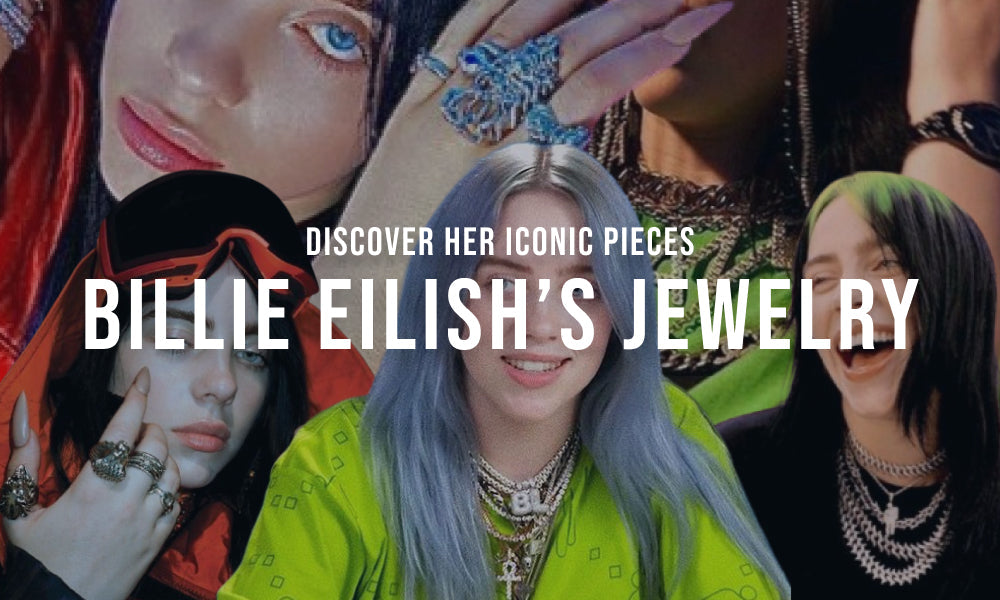Jewelry, especially when made with gold, has been cherished for generations. But as you navigate the world of gold jewelry, it's essential to understand the differences between the many types available. This guide differentiates between solid gold, gold-filled, gold plated, and gold vermeil jewelry to help you make informed choices.
Solid Gold
Solid gold refers to jewelry that consists entirely of gold or an alloy that blends gold with other metals. Pure gold, or 24-karat gold, is often too soft to craft into jewelry as it can be prone to bending and scratching.
To improve its resilience, gold is mixed with other metals like copper, silver, nickel, zinc, and palladium. This results in variations in gold purity, measured in karats (K):
- 24 Karat gold: 99.9% gold.
- 22 Karat gold: 91.7% gold, with the remaining 8.3% being other metals.
- 18 Karat gold: Contains 75% gold and 25% other metals.
- 14 Karat gold: Made up of 58.3% gold and 41.7% other metals.
- 10 Karat gold: Consists of 41.7% gold and 58.3% other metals.
- 9 Karat gold: 37.5% gold combined with 62.5% other metals.
Among these variations, 18K and 14K gold are commonly preferred for jewelry due to their balance between purity and durability.
Learn more about all gold karats here: "Introduction to All Gold Karats: 9k, 10k, 14k, 18k, 22k, and 24k"
Solid gold's color can differ based on the metals mixed with it:
- Yellow Gold: Derived from blending gold with silver and copper.
- White Gold: A mix of gold with metals like palladium, silver, and zinc. Often, white gold items are finished with a rhodium layer for added shine.
- Rose Gold: Comes from combining gold with a higher amount of copper.
- Peach Gold: A unique blend of gold, copper, and silver.

Solid gold's enduring appeal lies in its adaptability and the ability of jewelers to mold it into various designs and shades, ensuring it remains a treasured material in jewelry crafting.
Pros of Solid Gold
Durability: Solid gold is guaranteed to last a lifetime and can even be passed down through multiple generations.
Wearability: Unlike other gold variations, you don't need to limit how often you wear solid gold. Even if it gets scratches or becomes dull, it can be polished to restore its original shine.
Value: Solid gold holds its value over time and can be seen as an investment, especially considering the consistent rise in gold prices over the decades.
Recyclability: Solid gold can be recycled an infinite number of times, allowing it to be melted down and repurposed into new jewelry pieces.
Cost Per Wear: While the initial cost might be high, the longevity and durability of solid gold mean that over time, its cost per wear becomes quite economical, especially when compared to jewelry that doesn't last as long.
Cons of Solid Gold
The allure of solid gold jewelry is undeniable, but it does come with its drawbacks.
Price: The most significant disadvantage of solid gold is its cost. Being made entirely or predominantly of gold, it's naturally pricier than its gold-filled, plated, or vermeil counterparts.
Risk of Loss: For those who tend to misplace their belongings or are a bit careless, investing in solid gold might not be the best choice. Losing a piece of solid gold jewelry is not only emotionally distressing due to its sentimental value but also financially, given its high price.
Versatility: Given its high cost, you might find yourself limiting the number of solid gold pieces in your collection. This could reduce the versatility of your jewelry options compared to having a broader collection of less expensive alternatives.
What is Gold Filled Jewelry
Gold filled jewelry is a unique blend of craftsmanship and durability. Through a specialized process that involves pressure or heat, a layer of gold is securely bonded over a base metal. This base metal can be brass, copper, or even sterling silver.
One of the key characteristics that sets gold filled jewelry apart is its gold content. By definition, at least 5% of its total weight must be solid gold. Directly beneath this golden surface, you'll typically find a composition of 95% (or less) of the chosen base metal.
While many appreciate the aesthetics and longevity of gold filled jewelry, it's essential to note its common karat variations. Most pieces you'll encounter in the market are either of 14 Karat or 12 Karat gold.
An intriguing aspect of gold filled jewelry is its production. This type of jewelry is primarily mass-produced, given that the machinery required for its creation is not something every independent jeweler can access.
Pros of Gold Filled Jewelry
Durability: Gold filled jewelry boasts a significantly thicker gold layer compared to gold plated or vermeil pieces. This ensures a longer lifespan, with many items lasting between 10 to 30 years before any sign of the base metal underneath starts to show.
Cost-effective: While offering a genuine gold appearance and feel, gold filled jewelry comes at a fraction of the price of solid gold. It provides a balance between quality and cost, making it an attractive option for those who desire the look of gold without the substantial investment.
Appearance: The thicker layer of gold ensures that gold filled jewelry maintains its golden shine and luster for a long time, closely resembling the aesthetics of solid gold pieces.
Hypoallergenic: For many, gold filled jewelry can be a suitable choice if allergic reactions to certain metals are a concern. The thick gold layer can act as a barrier, preventing sensitive skin from coming into contact with potential allergens in the base metal.
Cons of Gold Filled Jewelry
Finite Lifespan: While gold filled jewelry outlasts its gold plated and gold vermeil counterparts, it still has a limited lifespan. Since it's predominantly made of base metal with only about 1/20 being actual gold, wear and tear will gradually expose the underlying material.
Limited Repairs: Unlike solid gold which can undergo numerous polishing and refinishing procedures, gold filled jewelry has restrictions. Excessive polishing will reveal the base metal beneath the gold layer.
Care Requirements: Maintaining the sheen and durability of gold filled jewelry demands careful handling. Exposure to elements like chlorine, sweat, lotions, and even water can diminish its quality. It’s advisable to be cautious and avoid such contacts to prolong the jewelry’s beauty.
Allergen Concerns: For individuals sensitive to metals like brass, copper, or sterling silver commonly used as base materials, gold filled jewelry may pose a risk. As the gold layer wears down over time, the exposed base metal can trigger allergic reactions.
Investment Value: From an investment perspective, gold filled jewelry doesn’t retain value like solid gold does. Over time, as the gold layer wears away and reveals the base metal beneath, its resale value diminishes.
Gold Filled vs Gold Vermeil
Gold filled jewelry is created using pressure or heat to bond a significant gold layer, typically 5% of its total weight, to a base metal. Gold vermeil, conversely, is sterling silver jewelry painted or dipped with a gold layer that's at least 2.5 microns thick. While both types can wear over time, gold filled generally offers more longevity due to its manufacturing process. In contrast, gold vermeil provides a more luxurious feel with its sterling silver base.
Gold Filled vs Gold Plated
Gold filled and gold plated jewelry both feature gold layers, but they differ in the thickness and processing of that gold. Gold filled pieces contain at least 5% gold and undergo a pressure or heat bonding process, resulting in a longer lifespan. Gold plated pieces, on the other hand, might have a minuscule layer of gold, potentially thinner than 2.5 microns, bonded to base metals like brass or copper. Gold filled jewelry tends to last longer, while gold plated offers more affordable choices with a shorter lifespan.

Gold Vermeil Meaning
Gold vermeil jewelry stands out for its unique composition. At its core, it utilizes a 925 sterling silver base, which is then cloaked with a slender layer of gold. The gold used for this layering process must be at least 10k, with a thickness reaching 2.5 microns.
To offer perspective on the thickness, a micron is roughly equivalent to the size of certain bacteria. In fact, some types of bacteria can span up to 10 microns in size. This means the gold layer on gold vermeil jewelry is approximately equivalent to the thickness of four such bacteria lined up. This visual helps illustrate the delicate precision and attention to detail that goes into crafting gold vermeil pieces.
Pros of Gold Vermeil
Affordability: Gold vermeil jewelry is notably cost-effective, catering to those who are budget-conscious without compromising on quality or appearance.
Less Noticeable Wear: With its foundation of sterling silver, wear or thinning of the gold layer on white gold vermeil items is subtle, making it less conspicuous compared to yellow gold variants.
Hypoallergenic Properties: The sterling silver base intrinsic to gold vermeil offers hypoallergenic attributes. This makes it an excellent option for individuals susceptible to allergies from metals such as copper or brass.
Cons of Gold Vermeil
Limited Wear: Gold vermeil jewelry is not ideal for daily wear as it can tarnish and fade to its base metal more rapidly than other types.
Not Investment-worthy: Due to its minimal gold content (just 2.5 microns), gold vermeil isn't suitable for investment purposes. As the thin gold layer wears away over time, the piece's value diminishes.
Care Requirements: To maintain its appearance, gold vermeil should avoid contact with lotions, chemicals, liquids, sweat, and abrasive materials.
Gold Vermeil vs Gold Plated
Gold vermeil and gold plated jewelry both sport gold layers, but their differences lie in base materials and gold thickness. Gold vermeil uses a sterling silver base, ensuring its layer is at least 2.5 microns thick. In contrast, gold plated jewelry uses varied base materials like brass or copper and may have a gold layer that's less than 2.5 microns. Gold vermeil tends to be less allergenic and slightly pricier, while gold plated offers budget-friendly options with potential for quicker wear.
Gold Plated Jewelry
Gold plated jewelry involves coating a base material, typically brass or copper, with a layer of gold. The key characteristic of gold plated items is that their gold thickness isn't regulated. It can be as thin as less than 2.5 microns.
To provide a clearer perspective, let's compare it to something familiar. Considering the size of a bacterium, which can range between 2 to 10 microns, the gold layer in some plated jewelry could actually be thinner than the smallest known bacteria.
Pros of Gold Plated Jewelry
Affordability: Gold plated jewelry is the most economical option among the ones discussed. You can easily find pieces within a $50 budget.
Variety: Given its affordability, gold plated jewelry offers a plethora of design choices. If you're someone who likes having a diverse jewelry collection for weekend outings or changing looks frequently, gold plated jewelry could be an excellent choice.
Cons of Gold Plated Jewelry
Wear and Tear: Gold plated jewelry is sensitive to daily activities. Activities like washing hands, showering, or working out can cause the plating to wear off faster.
Not Hypoallergenic: People with metal allergies, especially to metals like brass, copper, or sterling silver, should be cautious. The thin gold layer will eventually wear off, exposing the base metal which can trigger allergic reactions.
Short Lifespan: Due to its thin layer of gold, gold plated jewelry tends to have a shorter lifespan compared to other gold alternatives.
Frequently Asked Questions
What Is the Best Type of Gold Jewelry to Buy?
The best type of gold jewelry to buy largely depends on your specific needs, preferences, and budget. If you're seeking a long-lasting, heirloom-quality piece and are willing to invest, solid gold is the way to go. For those looking for durable jewelry without the high price tag of solid gold, gold filled might be a suitable choice. If you have sensitivities to certain metals, gold vermeil, with its sterling silver base, might be preferable. Finally, if you desire a fashionable piece for occasional wear without breaking the bank, gold plated jewelry can be an attractive option.
What’s the price difference between gold filled and gold vermeil jewelry?
Gold filled jewelry generally costs more than gold vermeil due to the thicker layer of gold it possesses and the manufacturing process. The price difference can vary based on factors like the current price of gold, craftsmanship, design, and brand reputation. However, always check the specific jewelry and its properties before making a purchase.
How can I differentiate the gold jewelry types with my eyes?
Distinguishing between gold jewelry types just by looking can be challenging since they all have a golden appearance. However, over time, gold plated and gold vermeil pieces may start to tarnish or fade, revealing the base metal beneath, especially if they've been exposed to elements like water or chemicals. Solid gold jewelry will maintain its color and luster. Gold filled pieces will last longer without showing signs of wear compared to gold plated or vermeil. For a definitive identification, it's best to check any hallmarks or stamps on the jewelry or consult a jeweler.



































































